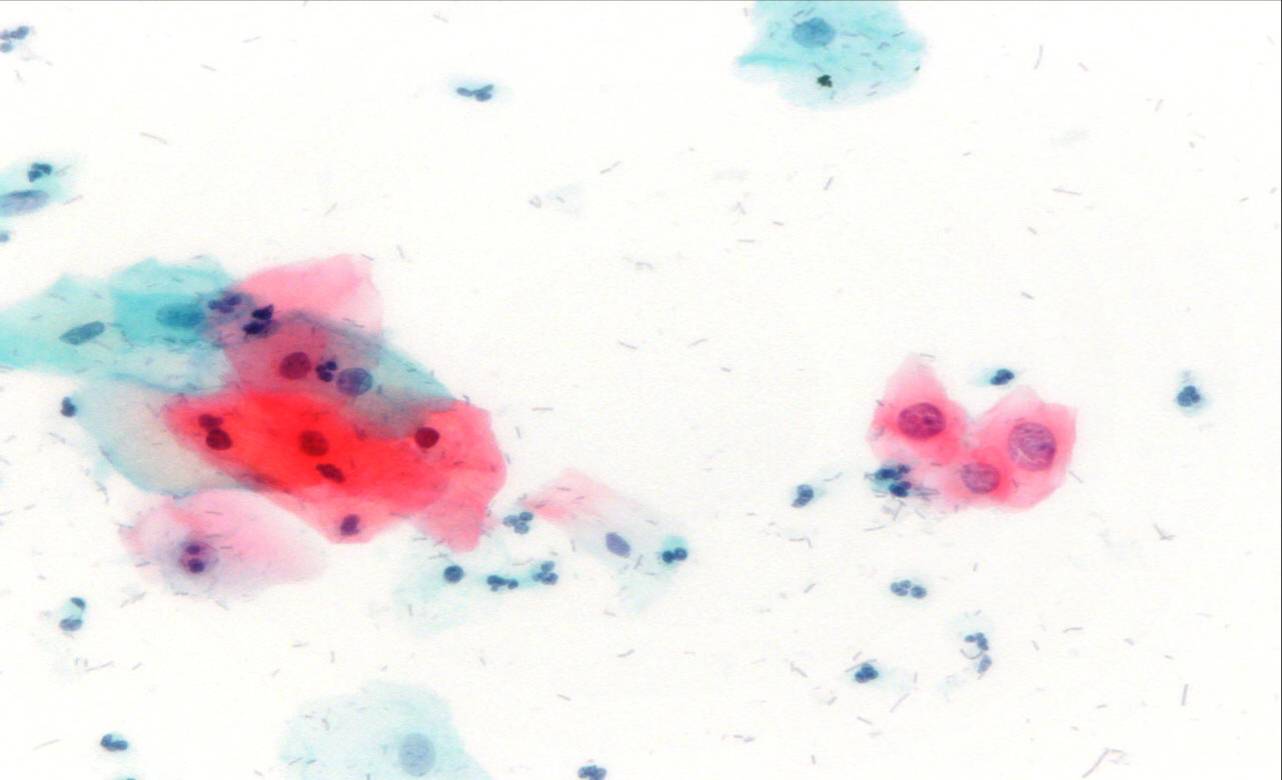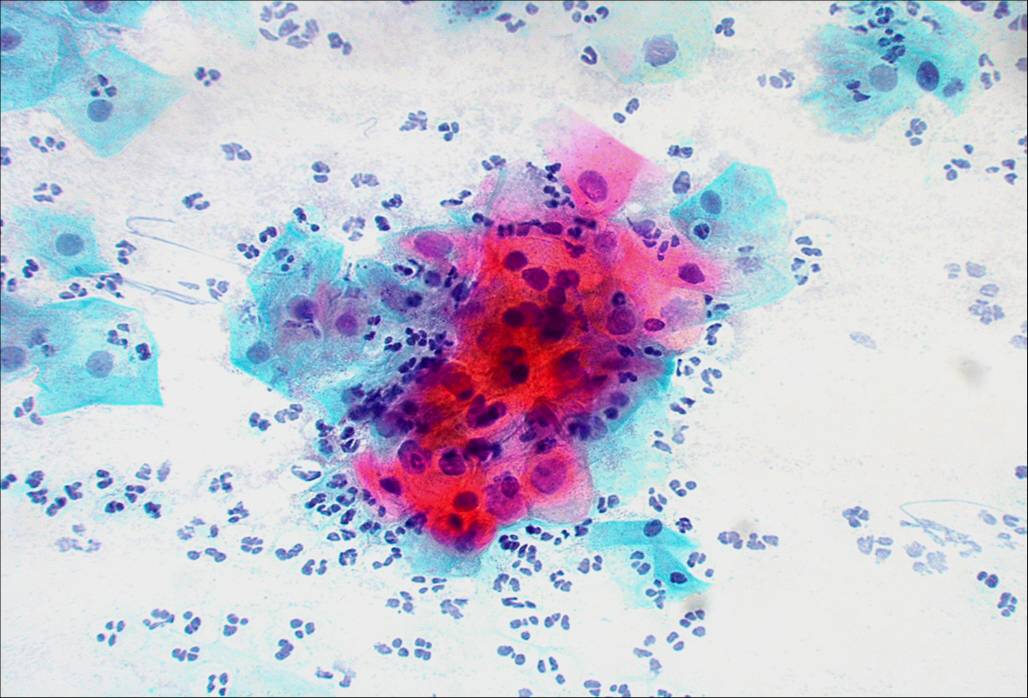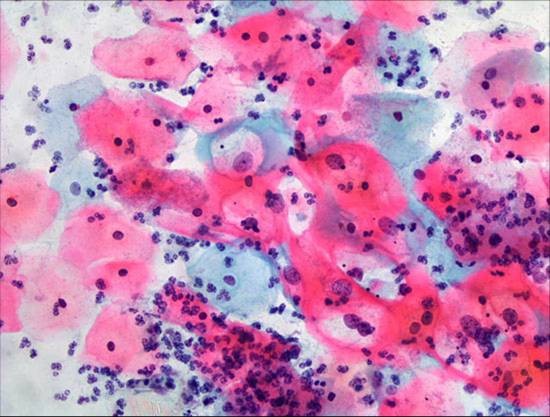

Cervical Cytology
Cervical intraepithelial neoplasia (CIN) invasive squamous carcinoma of the cervix, and atypical squamous cells of undetermined significance (ASCUS)
| Cervical Intraepithelial Neoplasia(CIN) |
| Invasive Squamous Carcinoma |
| Atypical squamous epithelial cells of uncertain significance (ASCUS) |
Atypical squamous cells of uncertain significance
- In the majority of smears, the distinction between benign epithelial cells and neoplastic cells can be made by an experienced cytotechnologist or cytopathologist with a high degree of confidence and the smears can be classified as “LSIL” or “HSIL” in accordance with The Bethesda System
- However in a small proportion of cases there may be genuine doubt as to whether the epithelial cells are benign or neoplastic.
- In accordance with The Bethesda System such smears are classified as containing “atypical squamous cells of undetermined significance (ASCUS)”.
- Alternative terminology (Equivalent terminology) for such smears includes “Squamous cell atypia not definitely neoplastic “ and “Borderline nuclear changes not amounting to neoplastic change”
- There are two situations in which the ASCUS category applies:
- In association with HPV changes. (koilocytotic atypia)
- In smears in which it is genuinely difficult to distinguish benign, reactive or degenerative change from LSIL , HSIL or invasive cancer
- Follow up studies of ASCUS cases by colposcopy, biopsy or repeat cytology have shown that they comprise a diverse group of cases. In 50-60% no significant abnormality is found whereas CIN2 or CIN3 has been reported in up to 20% of cases. These findings indicate that women with an ASCUS smear must be carefully followed up.
- ASCUS and Human papillomavirus infection:
- Koilocytes and the dyskeratotic cells associated with HPV infection almost always show nuclear changes amounting to ASCUS or CIN1 (LSIL).
- Occasionally koilocytes with markedly abnormal nuclei which are consistent with CIN2/3(HSIL) can be seen
- Smears containing squamous cells showing the morphological changes a associated with HPV infection should be classified according to the most severe nuclear abnormality in the smear.
End of module - Return to Training Package 1




